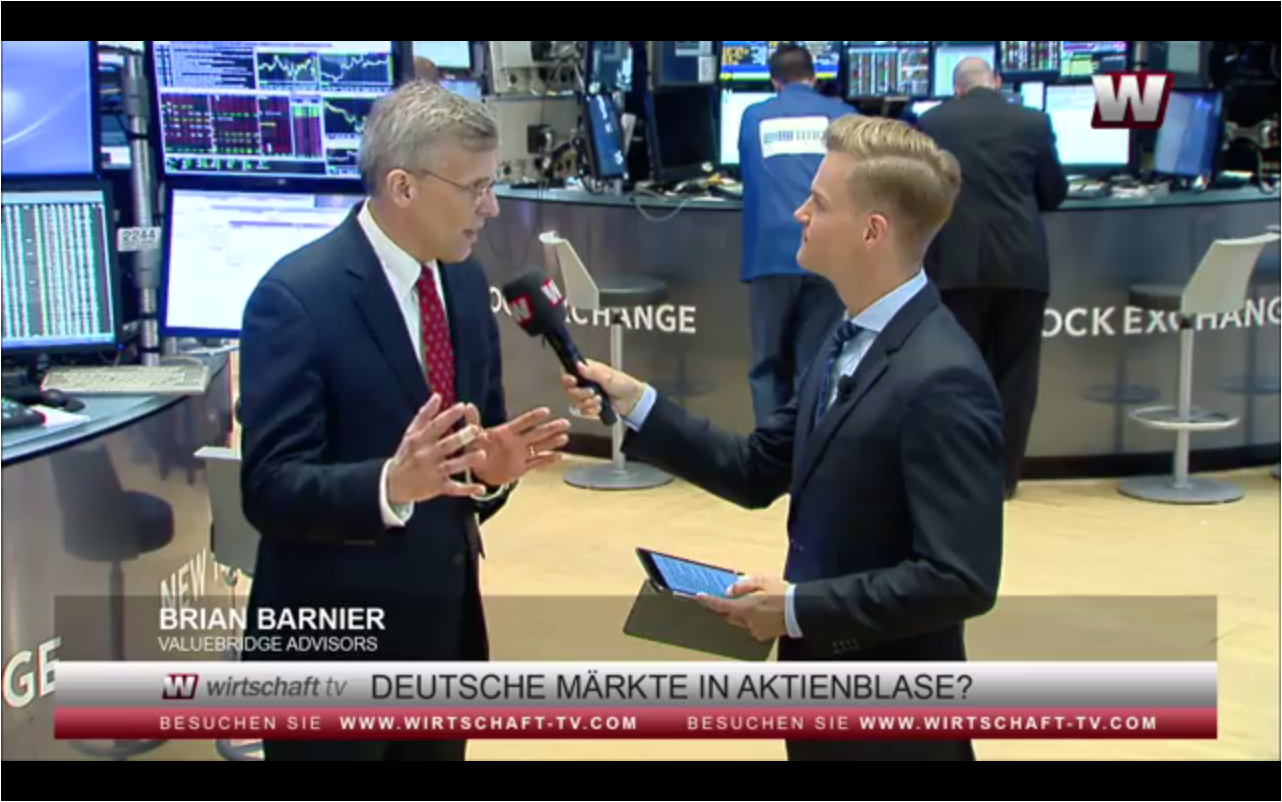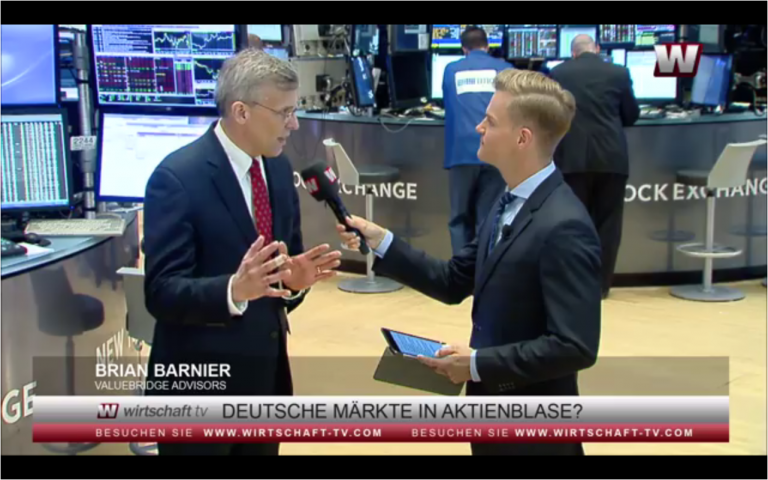Germany has been stung by the European Central Bank’s (ECB) quantitative easing (QE) missteps. Low interest rates hurting savers is a distortion that often leaps to mind. Two more distortions also matter — goods and equity prices.
 http://www.wirtschaft-tv.com/us-oekonom-barnier-deutsche-maerkte-in-einer-blase
http://www.wirtschaft-tv.com/us-oekonom-barnier-deutsche-maerkte-in-einer-blase
This video reinforces points we’ve long illustrated; starting with why the ECB’s QE is ineffective because Mario can’t fight Minecraft. In the Minecraft game resources are relatively abundant. In the world of globally traded goods, especially with Germany’s massive export economy, supply scarcity isn’t the constraining factor. Thus, prices fall and consumers buy more. For these products, when prices increase, including due to QE, people buy less. “Deflation” isn’t a problem when shoppers buy more.
ECB consistently misses its “inflation” target because people:
- Purchase less when prices rise
- Save more to meet retirement savings objectives when interest rates fall
- Cut consumption and investment in tangible assets when confidence falls, including confidence in governments.
The consumer-driven economy has been enabled by:
- Globally lower “research to retail” value chain product costs and prices
- Easier search for lower prices and the sharing economy
Goods price distortions pinch Germany
In 1960s, product prices mostly moved together – other than food swings. Further, price and amount purchased usually increased together as products were largely supply-constrained — more population required more production required higher prices to incent production. Consumers had no hope of falling prices other than during economic weakness. Today, that is no longer true.
Today, supply is more abundant so prices respond more to government regulation and consumer preferences. These forces drive individual product prices in divergent ways. In Germany, the price of beer in restaurants has been increasing and people have been cutting consumption. At the same time, mobile devices have been falling in price and people have been buying more. Today, people buy more at lower prices.
Where prices and consumption do move up together (e.g., housing), price is driven more by local regulation than QE. The more the German government advances fiscal and structural reforms to increase production, lower consumer prices and/or improve export competitiveness, the more ECB policy frustrates these efforts.
Financial equity price distortions pinch Germany
Central banks have been using QE to increase financial asset prices to create a “wealth effect” in hope of increasing consumption and investment in new production. Central banks have been successful increasing asset prices, but not tangible growth. Thus, central banks created bubbles as we’ve illustrated before.
A bubble is when a price strains far above a measure of tangible value. As in baseball cards, art or a cup of coffee, there are many measures of value. To be apples-to-apples with business stock prices, we use Business Gross Value Added (GVA) (equivalent to business sales minus inventory, and GDP minus the government and household sectors). Comparing the CDAX to this value benchmark shows more strain than the price index alone.
Some observers note the high CDAX is justified because:
- German exports as a share of GDP are about four times higher than in U.S. But, the ratio of German exports to GDP has been about the same since 2006, other than the 2008-9 plunge and recovery.
- Corporate earnings have been rising. But: 1) there are a range of methods for earnings engineering, as shown previously; and 2) sales matter more because sales drive the circular flow of the economy including wages, saving, consumption and investment.
Bottom line:
- Germany has been hit but it is not alone. Euro area countries with safer markets and stronger structural reforms also feel a pinch.
- Investors need to manage this risk through macro strategy and smarter stock picking.

